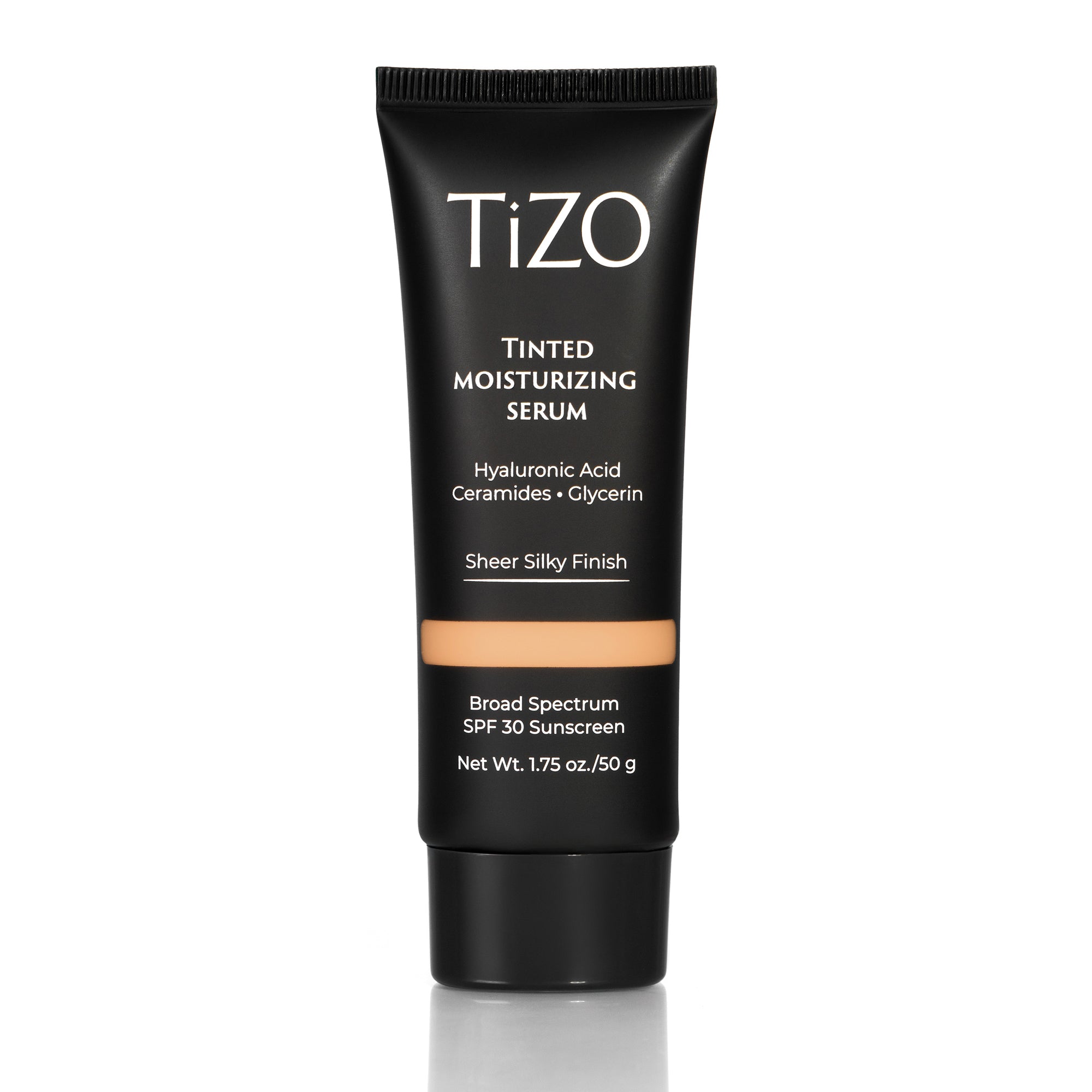Zinc Oxide and Titanium Dioxide: What's the Difference?
Zinc Oxide and Titanium Dioxide: What's the Difference?
We’ve seen a rise in the popularity of mineral sunscreens lately as scientists and skin care professionals alike have been learning more and more about chemical sunscreen filter absorption into the skin and the recent discoveries about the harmful nature of some chemical sunscreen ingredients for our oceans and reefs.
One thing is for sure, though: mineral sunscreen ingredients zinc oxide and titanium dioxide keep coming out on top. But many consumers are still left wondering about these two ingredients. They are both mineral sunscreen ingredients, which means they work by physically blocking the sun's rays from reaching the skin. Let’s talk about each of these ingredients.
How does mineral sunscreen work?
Mineral sunscreens use physical blockers to protect the skin from the sun's harmful rays. The two active ingredients used in mineral sunscreens are titanium dioxide and zinc oxide.
Titanium dioxide and zinc oxide work by sitting on top of the skin to reflect and scatter UV rays to prevent them from reaching the skin and causing damage. Conversely, chemical sunscreens work by absorbing UV rays and converting them to heat, and chemical sunscreen ingredients penetrate the skin, some of which have been found to enter the bloodstream.
What is Zinc Oxide?
Zinc oxide is a white or clear mineral that has been used for centuries for its protective properties. It’s used in a variety of products, including sunscreens, diaper rash creams, and ointments.
What are the benefits of using zinc oxide sunscreen?
The zinc oxide skin benefits are vast, including:
- Broad spectrum sunscreen: Zinc oxide protects against a broader range of UVA and UVB rays than any other sunscreen ingredient.
- Non-comedogenic: Zinc Oxide does not clog pores, which makes it a good choice for people with acne-prone skin.
- Gentle: Zinc oxide is generally considered to be safe for people with sensitive skin and for kids, as it is less likely to cause irritation than other sunscreen ingredients.
- Did you know? It’s also known for its antibacterial properties, which make it great for acne-prone and rosacea-prone skin.
What is Titanium Dioxide?
Titanium dioxide is a white pigment that is used in a variety of products, including sunscreens and cosmetics.
What are the benefits of sunscreen with titanium dioxide?
- Broad spectrum sunscreen: Titanium dioxide protects against both UVA and UVB rays but is somewhat less effective at protecting against short UVA rays. For that reason, you’ll always see TiZO combine titanium dioxide with zinc oxide in our formulations.
- Non-comedogenic: Titanium dioxide does not clog pores, which makes it a good choice for people with acne-prone skin.
- Gentle: Titanium dioxide is generally considered safe for people with sensitive skin.
- Lightweight: Including titanium dioxide in your mineral formula ensures that it is lightweight.
- Did you know? It’s also commonly used in makeup products for its durability, ensuring that the product is long-lasting.
What do zinc oxide and titanium dioxide have in common?
We believe that mineral sunscreens, formulated with only titanium dioxide and zinc oxide are the best sunscreen ingredients, and that’s why TiZO products are only made with these two sunscreen ingredients. In fact, TiZO stands for Titanium and Zinc Oxides. Here’s what these two ingredients have in common and why we love them so much:
- Broad spectrum sunscreen: Both ingredients provide broad-spectrum protection, protecting the skin from both UVA and UVB rays.
- Gentle: Both ingredients are gentle enough for all skin types, including sensitive skin.
- Safe and Effective: These two sunscreen ingredients are the only two that the FDA has deemed GRASE (Generally Recognized as Safe & Effective) without the need for additional testing.
- Reef Friendly: Both of these ingredients are considered to be reef friendly.
- Non-comedogenic: Both ingredients are non-comedogenic and will not clog pores.
What else should you be looking for?
When choosing a sunscreen, it is important to consider the following factors:
- SPF (Sun Protection Factor): The SPF of a sunscreen indicates how well it protects against UVB rays. The FDA (Food & Drug Administration) (Food & Drug Administration) and skin care professionals recommend using an SPF of 30 or higher.
- Broad-spectrum protection: Like we said above, SPF just measures how well it protects against UVB rays, but you also need protection from UVA rays! Look for a sunscreen that provides broad-spectrum protection that indicates that it protects against both UVA and UVB rays.
- Water-resistance: If you plan on swimming or sweating, choose a sunscreen that is water-resistant. You’ll see it right on the front of the packaging, at either 40 minutes or 80 minutes.
- Antioxidants: Sunscreens with antioxidants offer even more protective benefits by protecting against the damage caused by free radicals.
Which one is right for you?
The best way to find the best mineral sunscreen for you is to consider your individual needs and preferences. You may need a different sunscreen based on your skin type or skin concerns.
Skin Type
Your skin type is a major factor in deciding which sunscreen is right for you. For instance, if you have extremely reactive skin, or have redness or rosacea, sunscreen with only zinc oxide may be the best choice for you.
You want to take into consideration the finish of the product as well. If you have oily skin, you may want to opt for a sunscreen with a matte finish that will likely contain both zinc oxide and titanium dioxide. If you have dry skin, you may want sunscreen with a dewy finish.
Skin Concerns
If you are looking to reverse sun damage and wrinkles, you’ll likely want a sunscreen product that has additional benefits and ingredients. Of course, the act of wearing sunscreen daily is going to help prevent further damage and premature aging, but you may want something with a little more direct anti-aging benefits. Look for a sunscreen with ceramides that help retain the moisture balance for the skin and aid in the repair of existing damage.
If you have acne-prone skin, you’re going to want to look for a non-comedogenic sunscreen, meaning it does not contain oil or clog pores. As mentioned previously, both zinc oxide and titanium dioxide are non-comedogenic ingredients, so you should be safe with a mineral formula.
And as mentioned above, antioxidants work overtime to protect your skin against damaging free radicals, so you may want to opt for a mineral sunscreen with antioxidants as well.
Which TiZO® Products Contain Zinc Oxide and Titanium Dioxide?
Well, all of them do! All TiZO sunscreens contain either zinc oxide alone or a lovely combination of zinc oxide and titanium dioxide. In fact, TiZO stands for Titanium and Zinc Oxides, so our promise that we’re all mineral is right in our name. Take a look at some of our most popular and loved mineral sunscreen options:
Sunscreen with Zinc Oxide Only
TiZO AM Replenish Lightly Tinted SPF 40
This product is a silky, moisturizing mineral sunscreen with a sheer, light tint and a semi-matte finish. It helps prevent future UV damage, aids in the repair of existing damage, and results in long lasting moisturization.
- 16% zinc oxide
- Ceramides
- Antioxidants C & E
Also available non-tinted, TiZO AM Replenish Non-Tinted SPF 40.
TiZO Ultra Zinc Non-Tinted SPF 40
This creamy, moisturizing mineral sunscreen is suitable for all skin types and tones. It is sheer and virtually invisible, and smooths onto the skin, leaving a soft, elegant finish.
- 20% zinc oxide
- Antioxidants C & E
- Water resistant (40 minutes)
- Great for post-procedure and sensitive skin
- Great mineral sunscreen for dark skin tones
Also available tinted, TiZO Ultra Zinc Tinted SPF 40.
Sunscreen with Zinc Oxide and Titanium Dioxide
TiZO3 Tinted SPF 40 Primer/Sunscreen
This multifunctional sunscreen primer is a sheer, tinted mineral sunscreen that offers cosmetically elegant broad spectrum sun protection with a smoothing matte finish.
- 8% titanium dioxide and 3.8% zinc oxide
- Antioxidants C & E
- Water resistant (80 minutes)
Also available non-tinted, TiZO2 Non-Tinted SPF 40.
TiZO Mineral Sun Defense Tinted SPF 50
This gentle, tinted mineral sunscreen is designed to help shield the skin from the damaging effects of the sun every day with a lightweight, sheer, satin finish.
- 10% titanium dioxide and 3% zinc oxide
- Antioxidants C & E
- Water resistant (40 minutes)
- Mineral sunscreen SPF 50
TiZO Mineral Stick Tinted SPF 45
This mineral sunscreen stick is perfect for touch-ups on the go or at home. The sheer universal tint gives just a hint of a glow.
- 4% titanium dioxide and 5.5% zinc oxide
- Water resistant (80 minutes)
- Compact packaging
Also available non-tinted, TiZO Mineral Stick Non-Tinted SPF 45.
Conclusion
Titanium dioxide and zinc oxide are both sunscreen ingredients that are considered safe and effective by the FDA, reef friendly, non-comedogenic, and generally safe for sensitive skin. These ingredients are a great option for anybody looking for a sunscreen that they can trust and feel good about wearing daily. Remember to apply sunscreen liberally and evenly to all exposed skin and reapply every two hours, or more often if you are sweating or swimming.














Leave a comment